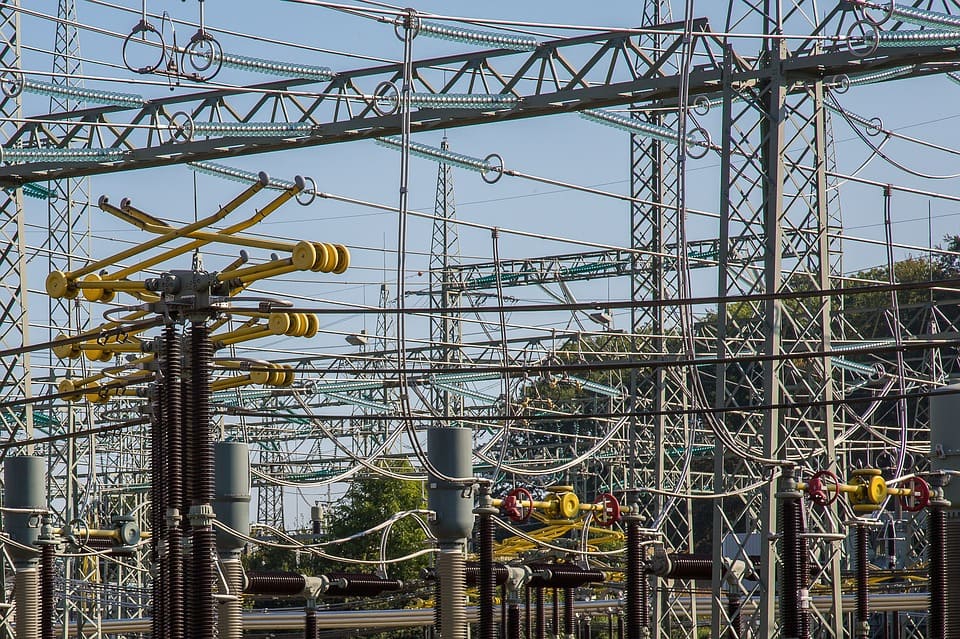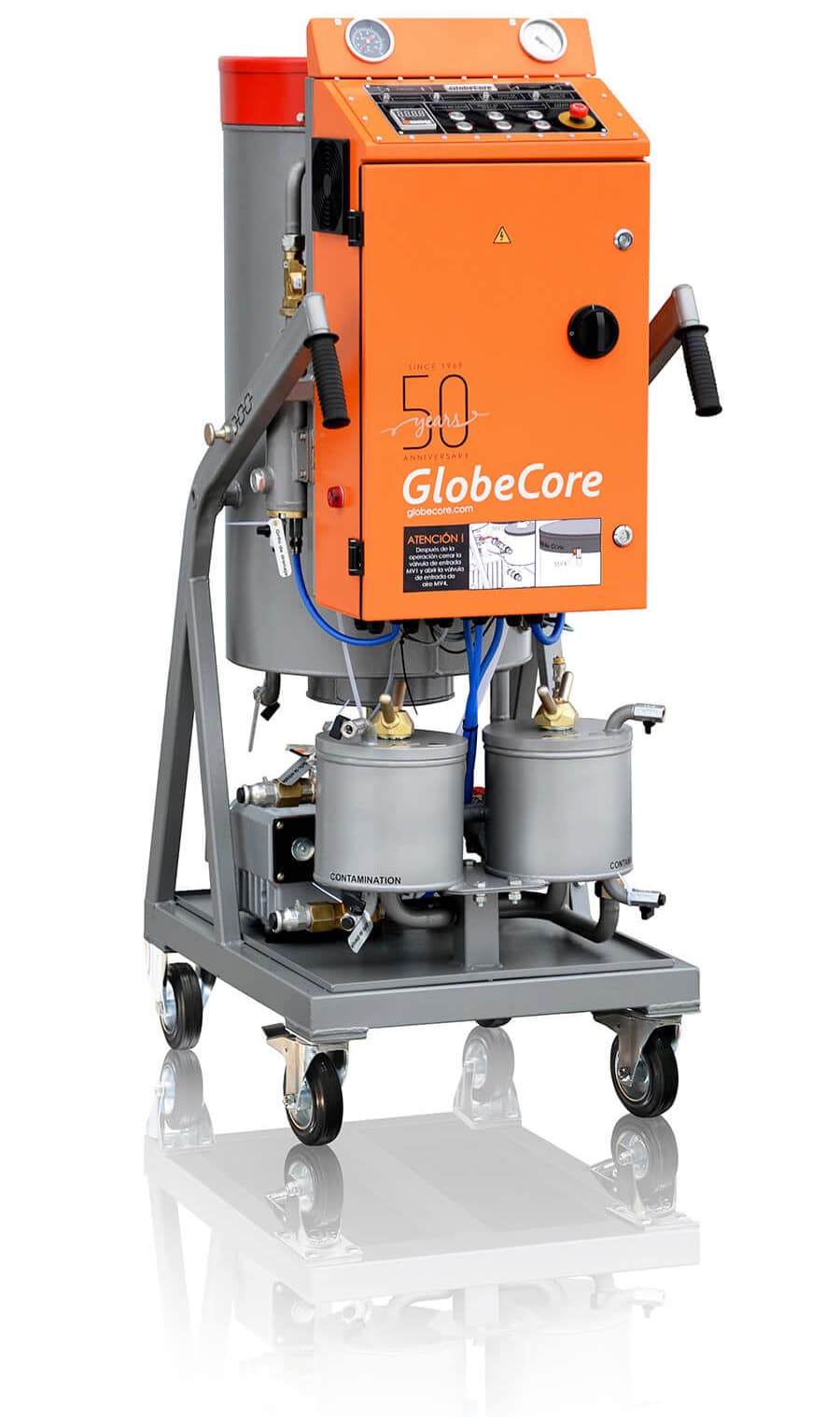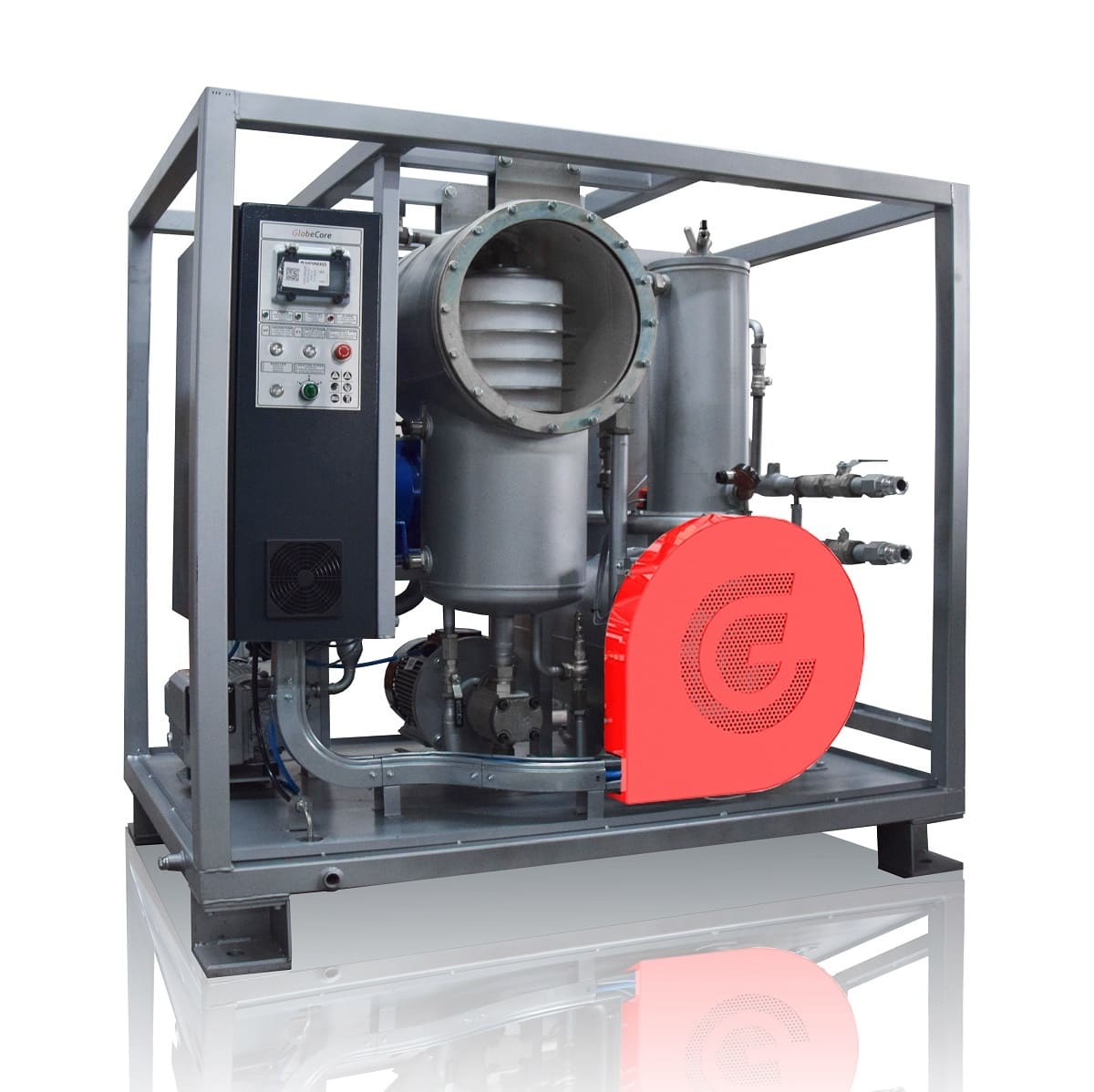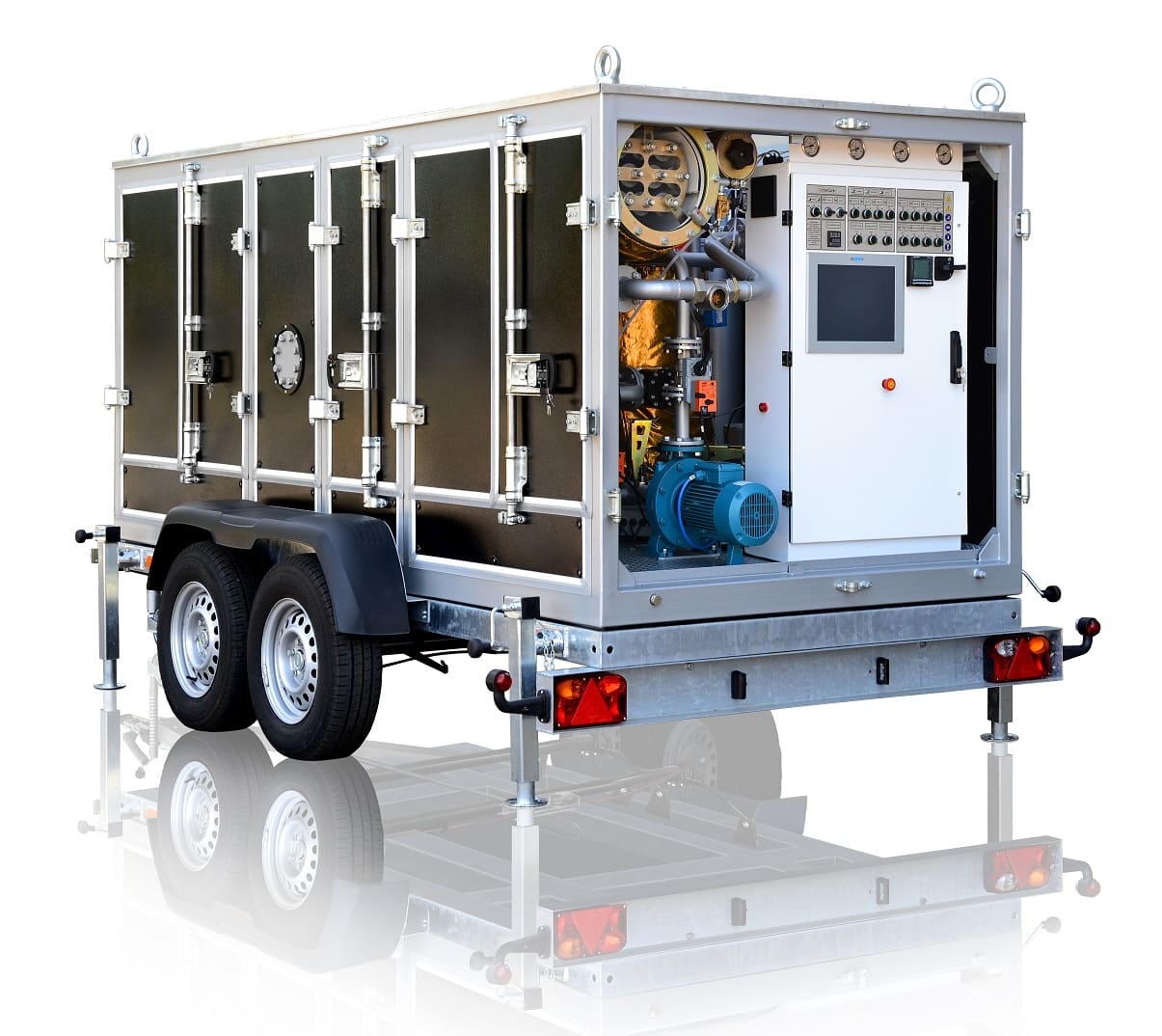Transformer oil is a special fluid used in power transformers. The petroleum product is made by distillation using selective, phenol and acid/base purification, as well as hydrocracking.
Transformer lifetime is greatly influenced by the quality and performance of transformer oil. Here are some of the criteria which transformer oils in power transformers must meet::
- Reliable heat dissipation, which can be achieved with high heat conductivity, low viscosity and high heat capacity;
- Absence of acids, which have a detrimental effect on transformer components;
- High dielectric strength.
Oil purity is a very important criterion. Solid particles, water, air and oxidation products have a significant effect on the overall dielectric strength of the oil; it is important to regularly purify transformer oil to remove such impurities before they exceed maximum concentration thresholds, such as. The current purity standards are as follows:
- Water content in oil entering the transformer must be below 0.001% and 0.0025% for airtight and non-airtight systems respectively;
- Air below 0.5% in airtight systems;
- Solid particle content must meet the requirements of purity class 11 for transformers up to 220 kV and class 9 for all other voltage ratings.
The temperature of transformer oil increases during transformer operation. This and the fact that transformer oils are flammable liquids means that certain safety measures are required. Flashpoint is the temperature when oil vapor ignites on contact with a flame in normal conditions. Arctic oils have flashpoint of +90ºС… +115ºС, for regular oils this parameters is higher: +130ºС… +170ºС.
With this in mind, another important parameter is the ignition point. This is the temperature when the oil can ignite on contact with air. This parameter should be within +350 to 400ºС.
Transformer oil can oxidize not only on the surface, but also with dissolved air. The concentration of air must not exceed 11% at 1 kg/cm2 pressure. Oil degassing must precede transformer installation. Even a small amount of air can lead to oxidation in airtight systems, so the oil must be highly stable to oxidation. GlobeCore’s UVM type systems are used for oil degassing.
Oils with higher flashpoint allow for better drying and degassing before filling the transformer.
Transformer lifetime is greatly influenced by the quality and performance of transformer oil. This is why the oil must be checked for compliance with all quality standards; it also must be purified, dehydrated and degassed with GlobeCore equipment.
In many cases the oil in the transformer is protected from contact with air by film or a nitrogen blanket.
Transformer oil deteriorates with use. This is due to the influence of electrical field, air and high temperatures. Oils can interact with particles of transformer construction materials, forming impurities and sludge. Oxidation also changes transformer oil. All the factors listed above reduce dielectric strength and flashpoint, increasing acidity and dissipation factor. Insoluble sludge in oil circulation channels hinder normal cooling.
Transformer oil aging is the main reason for reduced transformer reliability. While the process is essentially irreversible, it can be slowed down significantly. For this purpose, GlobeCore suggests the CMM-R unit. This system regenerates transformer oil, i.e. fully restores its quality to standard parameters. Important benefits of the CMM-R is its ability to process oil in energized transformers, as well as round the clock regeneration.
The cost of new oil and the cost of disposing of used oil make oil regeneration very viable.
Note that a simple replacement of oil in the transformer is not enough; this is due to solid deposits on the internal surfaces of the transformer. Regeneration of oil in an online transformer can address this problem: the heat and the vibrations of the transformer, as well as the income of freshly regenerated oil help solve the sediment and remove from the transformer unit.


 CMM-0.6L Oil Degassing ...
CMM-0.6L Oil Degassing ... СММur-1L mobile oil ...
СММur-1L mobile oil ... CMM-10 mobile oil ...
CMM-10 mobile oil ...